Archives
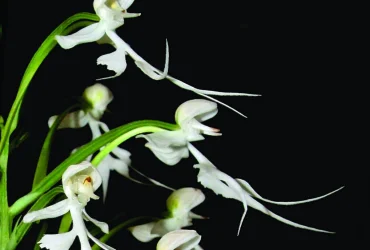 v7i2.170
v7i2.170ISSN: 1800-427X (print)
eISSN: 1800-427X (online)
DOI:10.47605/tapro.v7i2.170
Submitted date: 19 May 2014
Accepted date: 6 August 2014
Published date: 20 February 2015
Pp. 91–93.
Rediscovery of two Pyxine (Physciaceae) species from the Western Ghats
H. Biju*, R.G. Bagool & S. Nayaka
*Corresponding author. E-mail: drbijutbgri@gmail.com
The lichen genus Pyxine was established by Elias Fries in 1825 and it is a prominent member of the family Physciaceae. The genus Pyxine is mainly pantropical to subtropical with several species extending into temperate or oceanic regions, and comprises ca. 65 species. Index Fungorum (www.indexfungorum.org) holds a total of 162 records for Pyxine, which include 96 species and several infra-specific taxa. However, many taxa in that list need validation (e.g., P. consocians Vain. is mentioned as synonym of P. subcinerea Stirt.). In India, the genus harbors about 26 species, of which 10 are recorded for Kerala. Pyxine is characterized by dorsiventral, appressed, foliose thalli with linear radiating lobes, anatomically heteromerous, paraplectenchymatous upper cortex, white or yellow medulla, fibrous lower cortex, laminal apothecia with thalline or pseudothalline margin, epithecium K+ violet-purple, dark brown hypothecium, generally two-celled, mischoblastiomorphic brown spores, and simple paraphyses.
Section Editor: William R. Buck
eISSN: 1800-427X (online)
DOI:10.47605/tapro.v7i2.170
Submitted date: 19 May 2014
Accepted date: 6 August 2014
Published date: 20 February 2015
Pp. 91–93.
Rediscovery of two Pyxine (Physciaceae) species from the Western Ghats
H. Biju*, R.G. Bagool & S. Nayaka
*Corresponding author. E-mail: drbijutbgri@gmail.com
The lichen genus Pyxine was established by Elias Fries in 1825 and it is a prominent member of the family Physciaceae. The genus Pyxine is mainly pantropical to subtropical with several species extending into temperate or oceanic regions, and comprises ca. 65 species. Index Fungorum (www.indexfungorum.org) holds a total of 162 records for Pyxine, which include 96 species and several infra-specific taxa. However, many taxa in that list need validation (e.g., P. consocians Vain. is mentioned as synonym of P. subcinerea Stirt.). In India, the genus harbors about 26 species, of which 10 are recorded for Kerala. Pyxine is characterized by dorsiventral, appressed, foliose thalli with linear radiating lobes, anatomically heteromerous, paraplectenchymatous upper cortex, white or yellow medulla, fibrous lower cortex, laminal apothecia with thalline or pseudothalline margin, epithecium K+ violet-purple, dark brown hypothecium, generally two-celled, mischoblastiomorphic brown spores, and simple paraphyses.
Section Editor: William R. Buck
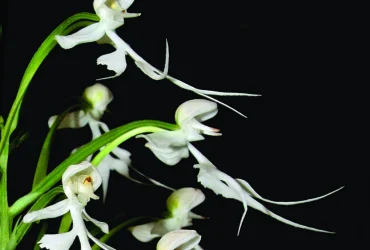 v7i2.169
v7i2.169ISSN: 1800-427X (print)
eISSN: 1800-427X (online)
DOI:10.47605/tapro.v7i2.169
Submitted date: 15 July 2014
Accepted date: 28 July 2014
Published date: 20 February 2015
Pp. 87–90.
Ceropegia jainii and C. rollae (Apocynaceae) at the brink of extinction
R. Kr. Singh
*Corresponding author. E-mail: rksbsiadsingh@yahoo.co.in
The highly economic, botanically curious genus Ceropegia L. (Apocynaceae Juss.) is native to India with the greatest number of species concentrated in Western Ghats which may be designated as the ‘cradle of Ceropegia’. Of the global 200 species of the Ceropegia, 58 species, two subspecies and four varieties are found in India, of which 35 species and one variety (ca. 56%) are endemic to Western Ghats where most are either critically endangered, endangered or vulnerable as per the IUCN categories and are also listed in the Red Data Book of Indian Plants. Of these, 50% (17 species and one variety) are strictly endemic to Maharashtra. Locally known as ‘Hanumangada’, ‘Kharpudi’, ‘Khartundi’, and ‘Tilori’, the genus is found mostly on plateaus and regions with gravelly and lateritic soils.
Section Editor: James L. Reveal
eISSN: 1800-427X (online)
DOI:10.47605/tapro.v7i2.169
Submitted date: 15 July 2014
Accepted date: 28 July 2014
Published date: 20 February 2015
Pp. 87–90.
Ceropegia jainii and C. rollae (Apocynaceae) at the brink of extinction
R. Kr. Singh
*Corresponding author. E-mail: rksbsiadsingh@yahoo.co.in
The highly economic, botanically curious genus Ceropegia L. (Apocynaceae Juss.) is native to India with the greatest number of species concentrated in Western Ghats which may be designated as the ‘cradle of Ceropegia’. Of the global 200 species of the Ceropegia, 58 species, two subspecies and four varieties are found in India, of which 35 species and one variety (ca. 56%) are endemic to Western Ghats where most are either critically endangered, endangered or vulnerable as per the IUCN categories and are also listed in the Red Data Book of Indian Plants. Of these, 50% (17 species and one variety) are strictly endemic to Maharashtra. Locally known as ‘Hanumangada’, ‘Kharpudi’, ‘Khartundi’, and ‘Tilori’, the genus is found mostly on plateaus and regions with gravelly and lateritic soils.
Section Editor: James L. Reveal
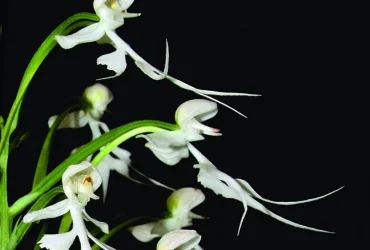 v7i2.168
v7i2.168ISSN: 1800-427X (print)
eISSN: 1800-427X (online)
DOI:10.47605/tapro.v7i2.168
Submitted date: 3 December 2014
Accepted date: 20 December 2014
Published date: 20 February 2015
Pp. 79–86.
HARVESTED PADDY FIELDS: AN UNDERSTUDIED ECOSYSTEM FROM THE NORTHERN WESTERN GHATS, INDIA
Sairandhri A. Lapalikar*, Ashish N. Nerlekar & Usha S. Yadav
*Corresponding author. E-mail: sairu1993@gmail.com
Abstract
This study was aimed at assessing the richness and obtaining allied ecological data of harvested rice fields at two sites around the town of Lonavala, northern Western Ghats, India. A total of ten fields were sampled (five at each site) using the quadrate method for the five post-harvest months. A total of 82 species were observed belonging to 74 genera of 31 families with Poaceae being the dominant family. Flora on the bunds and field proper was dissimilar. The natives and dicots species outnumbered the exotics and monocots respectively, and a gradual decline in the richness was observed from December through April. The PAST analysis indicated that some fields in the Tungi area were significantly different floristically from other fields. Presence of forests around the fields probably affects the post-harvest floristic diversity. Given that Indian farmers are experiencing a financial crisis, possible ways of gaining economic benefits out of this post-harvest floral diversity are discussed. Rice fields serve as a surrogate habitat for several species in areas disturbed due to anthropogenic activities and such studies provide baseline data for any future ecological studies.
Key words : exotic, floristics, native, Poaceae, post-harvest floral diversity, rice field
Section Editor: James L. Reveal
eISSN: 1800-427X (online)
DOI:10.47605/tapro.v7i2.168
Submitted date: 3 December 2014
Accepted date: 20 December 2014
Published date: 20 February 2015
Pp. 79–86.
HARVESTED PADDY FIELDS: AN UNDERSTUDIED ECOSYSTEM FROM THE NORTHERN WESTERN GHATS, INDIA
Sairandhri A. Lapalikar*, Ashish N. Nerlekar & Usha S. Yadav
*Corresponding author. E-mail: sairu1993@gmail.com
Abstract
This study was aimed at assessing the richness and obtaining allied ecological data of harvested rice fields at two sites around the town of Lonavala, northern Western Ghats, India. A total of ten fields were sampled (five at each site) using the quadrate method for the five post-harvest months. A total of 82 species were observed belonging to 74 genera of 31 families with Poaceae being the dominant family. Flora on the bunds and field proper was dissimilar. The natives and dicots species outnumbered the exotics and monocots respectively, and a gradual decline in the richness was observed from December through April. The PAST analysis indicated that some fields in the Tungi area were significantly different floristically from other fields. Presence of forests around the fields probably affects the post-harvest floristic diversity. Given that Indian farmers are experiencing a financial crisis, possible ways of gaining economic benefits out of this post-harvest floral diversity are discussed. Rice fields serve as a surrogate habitat for several species in areas disturbed due to anthropogenic activities and such studies provide baseline data for any future ecological studies.
Key words : exotic, floristics, native, Poaceae, post-harvest floral diversity, rice field
Section Editor: James L. Reveal
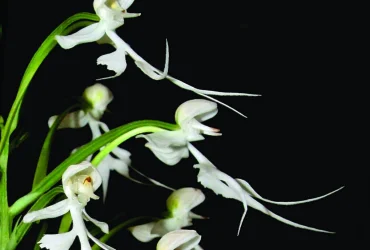 v7i2.167
v7i2.167ISSN: 1800-427X (print)
eISSN: 1800-427X (online)
DOI:10.47605/tapro.v7i2.167
Submitted date: 12 May 2014
Accepted date: 6 July 2014
Published date: 20 February 2015
Pp. 72–78, Pls. 3–5.
THE VETAL HILLS: AN URBAN WILDSCAPE IN PERIL
Ashish N. Nerlekar* & D.K. Kulkarni
*Corresponding author. E-mail: ashishadmirerofficus@gmail.com
Abstract
The Vetal Hill complex, an urban green space, is located in the heart of the city of Pune, India. The aim of the present work was to evaluate the total species lost prior to 1997 as well as to record new additions to the flora. The most recent flora of this hill complex has been used as a central reference. Past published records and herbaria data were consulted for plants that have not been recorded and opportunistic visits made to the hills resulted in additions to the flora. The study disclosed the loss of 84 species from this hill complex (54 species reported in the present study along with 30 species mentioned in earlier literature) over a period of more than 110 years, with 72 native species out of 84 showing a distinct decline. Twenty species are reported as additions to the flora out of which eleven are exotics and nine native. Regular monitoring is crucial in understanding such long term changes in any forested area. This hill complex is an important forest patch in the city that has undergone severe habitat degradation over the years and hence is in urgent need of conservation.
Key words : floristic diversity decline, India, monitoring, native species, Pune, urban green space
Section Editor: James L. Reveal
eISSN: 1800-427X (online)
DOI:10.47605/tapro.v7i2.167
Submitted date: 12 May 2014
Accepted date: 6 July 2014
Published date: 20 February 2015
Pp. 72–78, Pls. 3–5.
THE VETAL HILLS: AN URBAN WILDSCAPE IN PERIL
Ashish N. Nerlekar* & D.K. Kulkarni
*Corresponding author. E-mail: ashishadmirerofficus@gmail.com
Abstract
The Vetal Hill complex, an urban green space, is located in the heart of the city of Pune, India. The aim of the present work was to evaluate the total species lost prior to 1997 as well as to record new additions to the flora. The most recent flora of this hill complex has been used as a central reference. Past published records and herbaria data were consulted for plants that have not been recorded and opportunistic visits made to the hills resulted in additions to the flora. The study disclosed the loss of 84 species from this hill complex (54 species reported in the present study along with 30 species mentioned in earlier literature) over a period of more than 110 years, with 72 native species out of 84 showing a distinct decline. Twenty species are reported as additions to the flora out of which eleven are exotics and nine native. Regular monitoring is crucial in understanding such long term changes in any forested area. This hill complex is an important forest patch in the city that has undergone severe habitat degradation over the years and hence is in urgent need of conservation.
Key words : floristic diversity decline, India, monitoring, native species, Pune, urban green space
Section Editor: James L. Reveal
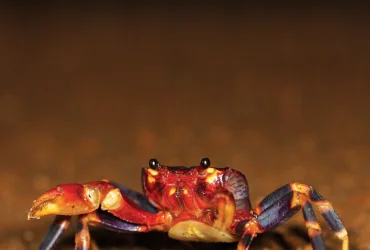 v7i1.165
v7i1.165ISSN: 1800-427X (print)
eISSN: 1800-427X (online)
DOI:10.47605/tapro.v7i1.165
Submitted date: 30 May 2014
Accepted date: 16 July 2014
Published date: 19 January 2015
Pp. 66–67. Pls. 26.
Mating behaviour of the Indian flying fox (Chiroptera) in southern Bangladesh
M.A. Baki, H. Al-Razi & S.M.I. Alam*
*Corresponding author. E-mail: shayermia@hotmail.com
Bangladesh is inhabited by 38 species of bats (Order Chiroptera) of which three are frugivorous. One of the latter is the Indian flying fox Pteropus giganteus, a common species in the country. The Indian flying fox is widely distributed in South and Southeast Asia from Pakistan to China and as far south as the Maldives Islands. Although the IUCN deems it as a species of Least Concern the population trend is decreasing.
Section Editor: Asoka Yapa
eISSN: 1800-427X (online)
DOI:10.47605/tapro.v7i1.165
Submitted date: 30 May 2014
Accepted date: 16 July 2014
Published date: 19 January 2015
Pp. 66–67. Pls. 26.
Mating behaviour of the Indian flying fox (Chiroptera) in southern Bangladesh
M.A. Baki, H. Al-Razi & S.M.I. Alam*
*Corresponding author. E-mail: shayermia@hotmail.com
Bangladesh is inhabited by 38 species of bats (Order Chiroptera) of which three are frugivorous. One of the latter is the Indian flying fox Pteropus giganteus, a common species in the country. The Indian flying fox is widely distributed in South and Southeast Asia from Pakistan to China and as far south as the Maldives Islands. Although the IUCN deems it as a species of Least Concern the population trend is decreasing.
Section Editor: Asoka Yapa
Hubungi Kami
The ultimate aim of the journal is to provide an effective medium for communication of the latest and best scientific information.
Copyright © 2020 Taprobanica. All Rights Reserved
Jasa Pembuatan Website by IKT




